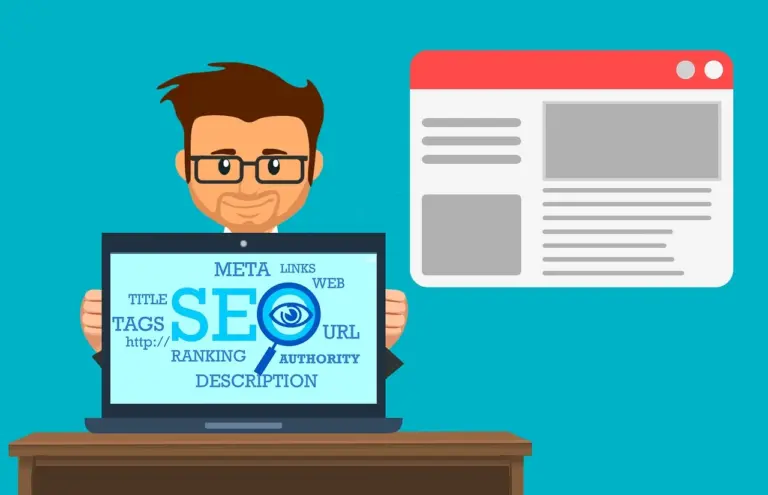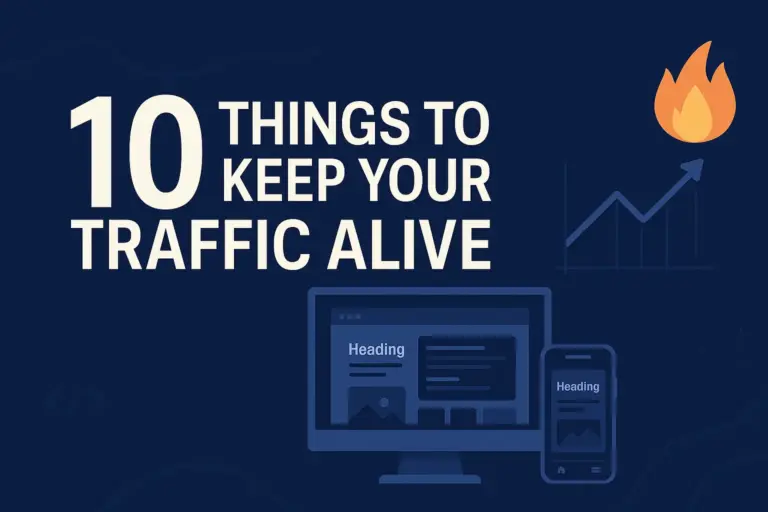Google’s AI Could Kill Your Web Traffic
TL;DR
- Links now live below the fold – Google’s AI Overviews answer many queries outright, so fewer people click through.
- Relying solely on link-building is dangerous – Even pages with strong backlink profiles are losing up to two-thirds of their former click-through rate when an AI Overview appears.
- More hidden risks – You lose first-party data, brand attribution, and ad costs rise as organic real estate shrinks.
- What to do – Own your audience (email, SMS, community), create content AI can’t replicate (original data, stories, video), implement rich schema for Answer-Engine Optimisation, diversify traffic sources, and keep your site lightning-fast.
- How we help – Leonov Design builds unique, branded sites engineered for AI search, from lean code and Core Web Vitals tuning to schema-rich content blocks that earn citations—and clicks.
The ground just shifted

When Google rolled out AI Overviews and its new “AI Mode,” it stopped being just a search engine that points people to answers and started being the answer. Links are pushed far below the fold—or vanish entirely—while Google serves a neatly packaged response generated from the very pages it now eclipses. For small businesses that depend on organic clicks, this is nothing short of a paradigm shift
Why leaning solely on link-building is suddenly dangerous
|
Old reality |
New reality |
|---|---|
|
Earning backlinks signaled authority and—paired with solid on-page SEO—nearly guaranteed steady traffic. |
AI Overviews summarise multiple pages in-line, so even top-ranking, well-linked pages can lose visibility and clicks. |
- Link equity gets trapped in Google’s own answer box. Last research shows that in March 2025, pages that once enjoyed a 7.3 % click-through rate for #1 positions saw that figure plunge to 2.6 % when an AI Overview appeared—a 34 % decline.
- Quality vs. quantity matters more than ever. Spammy or commoditised backlinks provide diminishing returns as Google’s AI focuses on intent and relevance rather than sheer link volume.
Additional hazards of the AI-first SERP

1. Zero-click future = zero data
Fewer visits mean fewer first-party analytics signals to guide marketing decisions.
2. Brand dilution
AI answers rarely attribute sources clearly. Your expertise may power the answer, yet the user never sees your logo.
3. Misinformation risk
AI Overviews have already advised everything from adding glue to pizza sauce to misstating the current year. Associating your brand with answers you cannot control can erode trust.
4. Tighter ad space, higher costs
As organic real-estate shrinks, more businesses crowd into paid listings, driving CPCs up.
5. Content licensing uncertainty
Google’s “hard red line” forces publishers to allow their content to train AI if they want to appear in search at all. Small sites have little leverage to negotiate.
The way forward: concrete actions for small businesses
|
Priority |
What to do |
Why it works in an AI world |
|---|---|---|
|
Own your audience |
Build an email list, SMS club, or private community. |
AI can’t take away relationships you control. |
|
Create “un-scrapable” content |
Publish unique data, case studies, opinions, behind-the-scenes stories, video demos, podcasts. |
Experiential or proprietary content is harder for AI to duplicate. |
|
Schema & AEO (Answer-Engine Optimisation) |
Mark up products, FAQs, how-tos, local business details with structured data; craft concise, factual answers within your pages. |
Helps Google cite your brand directly inside AI Overviews. |
|
Diversify traffic |
Invest in social video, partnerships, in-person events, and referral programmes. |
Reduces dependence on one channel that you don’t control. |
|
Speed & UX excellence |
Optimise Core Web Vitals, implement server-side caching, and design crystal-clear navigation. |
Google still rewards fast, user-friendly sites—plus visitors who do click will convert better. |
|
First-party data analytics |
Use cookieless tracking tools, server-side tagging, and customer surveys to fill the insight gap. |
Maintains data-driven decision-making even as organic clicks fall. |
|
Monitor AI SERPs |
Track queries that trigger AI Overviews and measure resulting traffic changes. |
Lets you adapt content strategy before losses snowball. |
Staying visible may be harder—but with the right strategy, it’s far from impossible. The businesses that adapt now will be the ones AI search can’t ignore.
How we can help
At Leonov Design we craft unique, lightning-fast, brand-first websites engineered for the AI-driven future of search. From lean codebases and Core Web Vitals tuning to rich schema, conversational FAQ blocks and content formats that AI loves to cite—but can’t fully replace—we position small businesses to thrive in the new landscape. If you’re ready to turn today’s search upheaval into tomorrow’s competitive edge, let’s chat over coffee (in Melbourne or online) and build a site that stands out to humans and machines alike.
